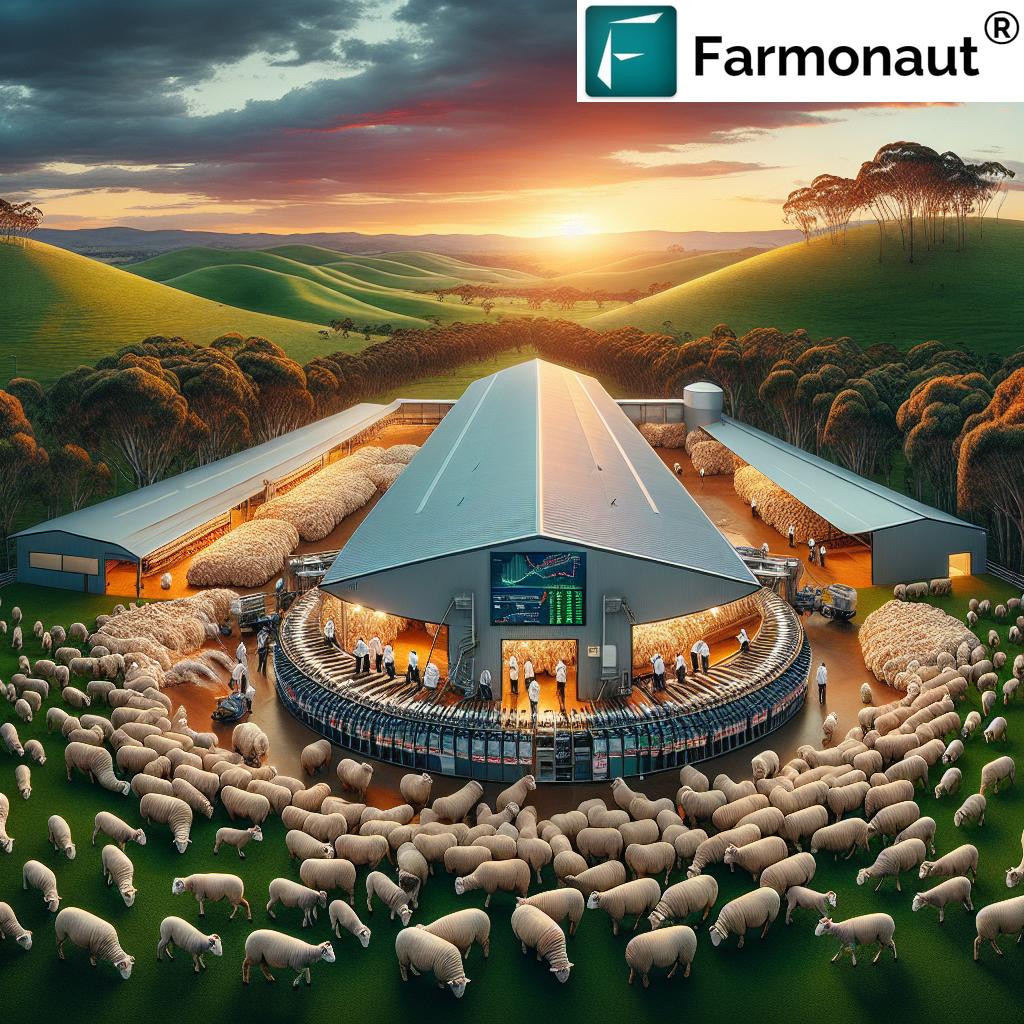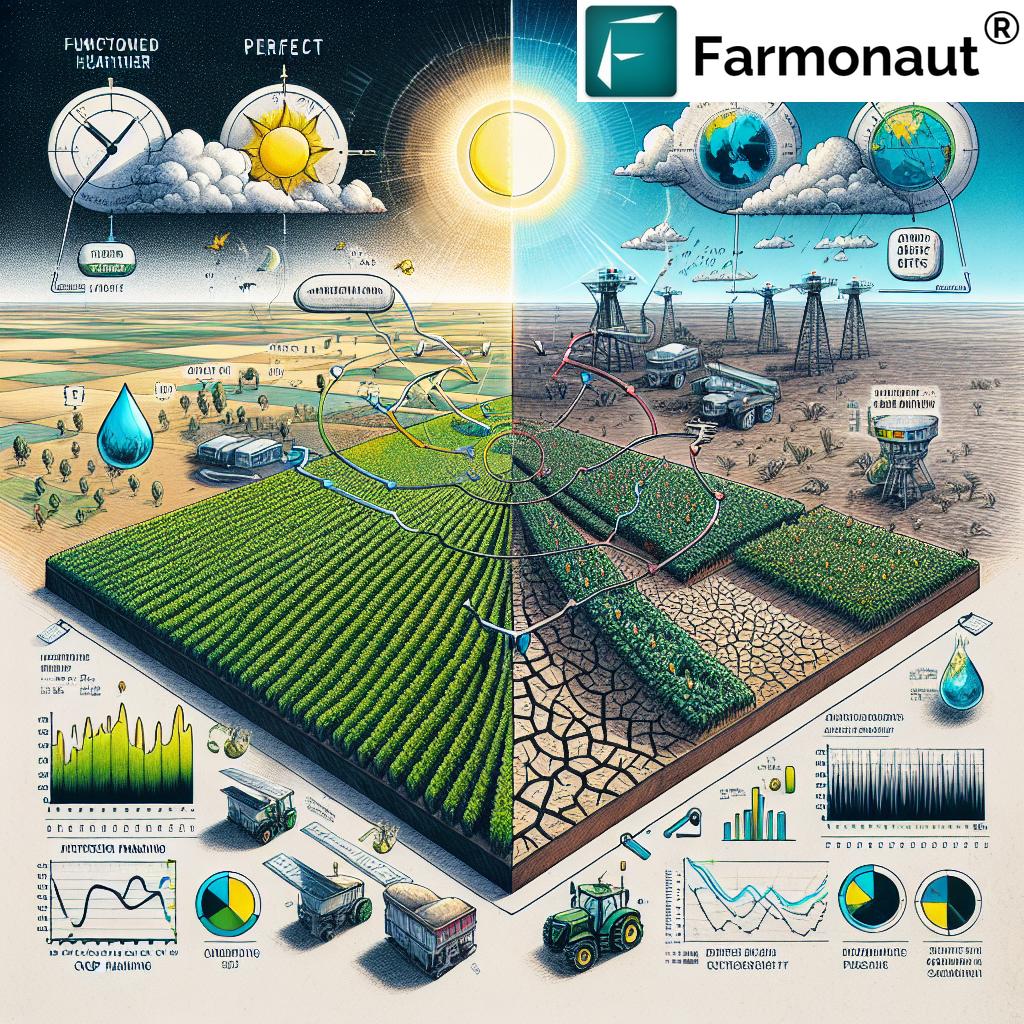Unveiling Excellence: 2019 National Graduate Wool Classer Competition Highlights Australia’s Sustainable Wool Industry

“The 2019 National Graduate Wool Classer Competition at Sydney’s Royal Easter Show attracted over 100 emerging talents in the industry.”
Welcome to our comprehensive exploration of the Australian wool industry, focusing on the prestigious 2019 National Graduate Wool Classer Competition and the sustainable practices that define this vital sector. As we delve into the world of wool classing competitions and Australian wool standards, we’ll uncover the latest trends, techniques, and innovations that are shaping the future of this time-honored craft.
In this blog post, we’ll take you on a journey through the exciting realm of wool classing, showcasing the skills and dedication of Australia’s emerging talents. From the bustling atmosphere of the Royal Easter Show in Sydney to the intricate details of clip preparation techniques, we’ll provide you with valuable insights into every aspect of this dynamic industry.
The 2019 National Graduate Wool Classer Competition: A Showcase of Talent
The National Graduate Wool Classer Competition is a highlight of the Australian wool industry calendar, bringing together the brightest young minds in the field. Held annually at the Royal Easter Show in Sydney, this event serves as a platform for recent graduates to demonstrate their skills and knowledge in front of industry experts and peers.
In 2019, the competition reached new heights, attracting over 100 participants from across NSW and beyond. These emerging wool classers showcased their expertise in various aspects of the craft, including:
- Wool assessment and classification
- Clip preparation techniques
- Understanding of Australian wool standards
- Knowledge of sustainable wool production practices
- Familiarity with market trends and auction sale procedures
The competition not only serves as a proving ground for new talent but also highlights the industry’s commitment to excellence and continuous improvement. By fostering a spirit of friendly competition, the event encourages participants to strive for the highest standards in wool classing, ultimately benefiting the entire Australian wool industry.
Understanding Wool Classing: The Art and Science
Wool classing is a crucial step in the wool production process, requiring a unique blend of skills, knowledge, and experience. A wool classer’s primary responsibility is to assess and categorize wool based on various characteristics, ensuring that each bale meets specific quality standards and market requirements.
Key aspects of wool classing include:
- Fiber assessment: Classers evaluate the fineness, strength, length, and color of wool fibers.
- Contamination control: Ensuring that wool is free from foreign materials and vegetable matter.
- Sorting and grouping: Classifying wool into homogeneous lots based on similar characteristics.
- Documentation: Maintaining accurate records and preparing necessary paperwork for auction sales.
- Compliance: Adhering to Australian wool standards and industry regulations.
The role of a wool classer is vital in maintaining the reputation of Australian wool in the global market. By ensuring consistent quality and proper classification, classers contribute significantly to the industry’s sustainability and economic success.
Australian Wool Standards: Setting the Benchmark for Quality
Australian wool standards are renowned worldwide for their stringent requirements and commitment to excellence. These standards form the foundation of the industry, guiding every aspect of wool production, from sheep welfare to clip preparation and marketing.
Some key elements of Australian wool standards include:
- Animal welfare guidelines: Ensuring the ethical treatment of sheep throughout the wool production process.
- Environmental sustainability measures: Promoting responsible land management and resource conservation.
- Quality assurance protocols: Implementing rigorous testing and certification processes.
- Traceability systems: Enabling the tracking of wool from farm to final product.
- Code of Practice: Providing comprehensive guidelines for wool harvesting and preparation.
These standards not only maintain the high quality of Australian wool but also contribute to its reputation as a sustainable and ethically produced fiber. As a result, Australian wool commands premium prices in international markets and is sought after by discerning buyers worldwide.
Sustainable Wool Production: A Cornerstone of the Industry
Sustainability is at the heart of the Australian wool industry, with producers and classers alike committed to environmentally responsible practices. This focus on sustainability not only ensures the long-term viability of the industry but also meets the growing demand for eco-friendly fibers in the global market.
“Australian wool classing standards contribute to a sustainable wool industry worth over $3 billion annually in exports.”
Key aspects of sustainable wool production in Australia include:
- Regenerative farming: Implementing practices that improve soil health and biodiversity.
- Water conservation: Utilizing efficient irrigation systems and rainwater harvesting techniques.
- Carbon sequestration: Promoting practices that capture and store carbon in the soil.
- Ethical sheep management: Prioritizing animal welfare and humane treatment.
- Waste reduction: Minimizing waste in the wool harvesting and processing stages.
These sustainable practices not only benefit the environment but also contribute to the production of high-quality wool. By prioritizing sustainability, the Australian wool industry ensures its continued success in an increasingly eco-conscious global market.
Wool Market Trends: Navigating a Dynamic Landscape
Understanding market trends is crucial for wool classers and producers alike. The wool market is influenced by various factors, including global economic conditions, fashion trends, and consumer preferences. Staying informed about these trends helps industry professionals make informed decisions and adapt to changing market demands.
Some notable wool market trends in recent years include:
- Increasing demand for sustainable fibers: Consumers are showing a growing preference for environmentally friendly and ethically produced wool.
- Rise of athleisure wear: The popularity of performance-based wool fabrics in activewear has opened new market opportunities.
- Emphasis on traceability: Buyers are increasingly interested in the provenance and production methods of wool products.
- Technological innovations: Advancements in wool processing techniques are creating new applications for wool fibers.
- Fluctuations in global demand: Economic factors and international trade relations continue to impact wool prices and export volumes.
By staying attuned to these market trends, wool classers can better prepare their clips to meet buyer expectations and maximize returns for producers.
Clip Preparation Techniques: The Art of Wool Presentation
Proper clip preparation is essential for achieving the best possible results in the wool market. This process involves carefully sorting, skirting, and packaging wool to meet industry standards and buyer requirements. Skilled wool classers employ various techniques to ensure that each clip is presented in its best light.
Key aspects of clip preparation include:
- Skirting: Removing lower-quality wool from the edges of the fleece.
- Classing: Sorting wool into consistent lines based on fiber characteristics.
- Contamination removal: Eliminating any foreign materials or vegetable matter.
- Packaging: Properly pressing and baling wool for transport and storage.
- Documentation: Accurately recording wool characteristics and preparing sale documents.
Mastering these techniques is crucial for success in wool classing competitions and in the professional world. The 2019 National Graduate Wool Classer Competition placed significant emphasis on clip preparation skills, challenging participants to demonstrate their proficiency in this critical area.
Agricultural Education in Australia: Nurturing the Next Generation
The success of the Australian wool industry relies heavily on the quality of agricultural education provided to aspiring wool classers and industry professionals. Australia boasts a robust system of agricultural education, combining theoretical knowledge with practical, hands-on experience.
Key components of agricultural education in Australia include:
- TAFE programs: Technical and Further Education institutions offer specialized courses in wool classing and related fields.
- University degrees: Many Australian universities provide comprehensive agricultural science programs with a focus on wool production.
- Industry partnerships: Collaboration between educational institutions and industry bodies ensures that curricula remain relevant and up-to-date.
- Practical training: Hands-on experience through internships and on-farm training programs.
- Continuing education: Opportunities for professional development and ongoing learning for established classers.
The 2019 National Graduate Wool Classer Competition showcased the effectiveness of Australia’s agricultural education system, with participants demonstrating a high level of knowledge and skill across various aspects of wool classing.
Wool Classer Training Programs: Pathways to Excellence
Becoming a proficient wool classer requires dedicated training and ongoing education. Australia offers a range of training programs designed to equip aspiring classers with the necessary skills and knowledge to excel in the industry.
Some key features of wool classer training programs include:
- Comprehensive curriculum: Covering all aspects of wool production, classing, and marketing.
- Practical workshops: Hands-on training in wool assessment and clip preparation techniques.
- Industry placements: Opportunities to gain real-world experience in working sheds.
- Certification processes: Rigorous assessment to ensure graduates meet industry standards.
- Ongoing professional development: Continuous learning opportunities to stay current with industry trends and technologies.
These training programs play a crucial role in maintaining the high standards of the Australian wool industry and preparing the next generation of wool classers for success in competitions and their professional careers.
Sheep Welfare in the Wool Industry: A Top Priority
The Australian wool industry places a strong emphasis on sheep welfare, recognizing that ethical animal husbandry is not only morally imperative but also essential for producing high-quality wool. This commitment to animal welfare is reflected in industry standards, practices, and training programs.
Key aspects of sheep welfare in the wool industry include:
- Humane handling practices: Ensuring sheep are treated with care during shearing and other procedures.
- Nutrition and health management: Providing appropriate feed and veterinary care to maintain sheep health.
- Shelter and protection: Offering adequate shelter from extreme weather conditions.
- Genetic improvement: Breeding programs focused on enhancing sheep welfare and wool quality.
- Pain management: Implementing best practices for procedures such as mulesing alternatives.
The 2019 National Graduate Wool Classer Competition emphasized the importance of sheep welfare, with participants demonstrating their knowledge of ethical animal handling practices and welfare considerations in wool production.
Auction Sales and Market Dynamics: From Farm to Fashion
Understanding the intricacies of auction sales and market dynamics is crucial for wool classers and producers. The journey of wool from farm to fashion involves a complex system of grading, valuation, and trading that ultimately determines the price and destination of each bale.
Key elements of the wool auction and marketing process include:
- Sample preparation: Creating representative samples of each wool lot for buyer inspection.
- Pre-sale testing: Conducting objective measurements of wool characteristics.
- Auction mechanics: Understanding the bidding process and price determination factors.
- Market reporting: Analyzing and interpreting market trends and price indicators.
- Export procedures: Navigating the requirements for international wool trade.
Proficiency in these areas allows wool classers to make informed decisions that maximize returns for producers and ensure that Australian wool continues to command premium prices in global markets.
Compliance and Regulation: Ensuring Industry Integrity
The Australian wool industry operates within a framework of strict compliance measures and regulations designed to maintain the highest standards of quality, sustainability, and ethical practice. These measures are essential for preserving the industry’s reputation and ensuring continued access to international markets.
Key aspects of compliance and regulation in the wool industry include:
- Quality assurance programs: Implementing systems to verify wool quality and preparation standards.
- Environmental compliance: Adhering to regulations regarding land use, water management, and chemical applications.
- Animal welfare standards: Complying with national and international guidelines for sheep husbandry.
- Traceability systems: Maintaining accurate records to enable wool tracking from farm to final product.
- Biosecurity measures: Implementing protocols to prevent the spread of pests and diseases.
The 2019 National Graduate Wool Classer Competition placed significant emphasis on participants’ understanding of these compliance requirements, recognizing their importance in the professional world of wool classing.
Innovation in the Wool Industry: Embracing New Technologies
The Australian wool industry is continuously evolving, embracing new technologies and innovative practices to improve efficiency, sustainability, and product quality. These advancements are reshaping various aspects of wool production, from on-farm management to marketing and distribution.
Some notable innovations in the wool industry include:
- Precision agriculture: Utilizing satellite imagery and data analytics for improved pasture management.
- Automated shearing systems: Developing robotic technologies to enhance shearing efficiency and reduce stress on animals.
- Blockchain traceability: Implementing blockchain technology to provide transparent supply chain information to consumers.
- Advanced fiber testing: Employing new methods for more accurate and comprehensive wool fiber analysis.
- Sustainable processing techniques: Developing eco-friendly methods for scouring and treating raw wool.
These innovations not only improve the efficiency and sustainability of wool production but also open up new market opportunities for Australian wool products.
The Global Impact of Australian Wool: A Fiber of Choice
Australian wool has long been recognized as a premium fiber in the global textile industry, renowned for its quality, versatility, and sustainable production methods. The impact of Australian wool extends far beyond the country’s borders, influencing fashion trends, manufacturing processes, and consumer preferences worldwide.
Key aspects of Australian wool’s global impact include:
- Fashion industry influence: Australian Merino wool is a favored material for high-end fashion and performance wear.
- Economic contributions: Wool exports play a significant role in Australia’s agricultural economy.
- Sustainability leadership: Australian wool production sets global standards for sustainable fiber production.
- Research and innovation: Advancements in Australian wool production benefit the global textile industry.
- Cultural significance: Wool production is an integral part of Australia’s rural heritage and national identity.
The success of events like the 2019 National Graduate Wool Classer Competition contributes to maintaining Australia’s position as a leader in the global wool industry, ensuring that the next generation of classers is prepared to meet international standards and market demands.
Future Prospects: The Evolving Landscape of Wool Classing
As we look to the future, the wool classing profession is poised for continued growth and evolution. Emerging trends and challenges will shape the industry, creating new opportunities for skilled classers and innovative approaches to wool production.
Some key factors influencing the future of wool classing include:
- Increasing demand for sustainable fibers: The growing focus on eco-friendly materials will likely boost demand for ethically produced wool.
- Technological integration: Advanced tools and software may become integral to the wool classing process.
- Climate change adaptation: Classers will need to navigate the impacts of changing weather patterns on wool production.
- Consumer education: There will be a growing role for classers in communicating the benefits of wool to consumers.
- International collaboration: Increased global partnerships may lead to new opportunities and challenges for Australian classers.
By staying informed about these trends and continuously honing their skills, wool classers can ensure their relevance and success in this dynamic industry.
Conclusion: Celebrating Excellence in Australian Wool
The 2019 National Graduate Wool Classer Competition serves as a testament to the strength, innovation, and commitment to excellence that defines the Australian wool industry. By showcasing the skills of emerging talents and highlighting the industry’s dedication to sustainability and quality, this event epitomizes the bright future of wool production in Australia.
As we’ve explored throughout this blog post, the world of wool classing is multifaceted and ever-evolving. From the intricacies of clip preparation to the global impact of Australian wool, every aspect of this industry plays a crucial role in maintaining its reputation for excellence.
The continued success of the Australian wool industry relies on the passion and expertise of its wool classers, the dedication of its producers, and the ongoing commitment to sustainability and innovation. By fostering new talent through events like the National Graduate Wool Classer Competition and embracing new technologies and practices, the industry ensures its place at the forefront of global fiber production.
As we look to the future, we can be confident that Australian wool will continue to set the standard for quality, sustainability, and innovation in the global textile market. The skills and knowledge showcased in competitions like the one held in 2019 at the Royal Easter Show in Sydney will undoubtedly contribute to the ongoing success and evolution of this vital industry.
FAQ Section
- What is wool classing?
Wool classing is the process of evaluating, sorting, and categorizing raw wool based on various characteristics such as fiber diameter, length, strength, and color. This ensures consistency and quality in wool lots for sale and processing. - How does one become a certified wool classer in Australia?
To become a certified wool classer in Australia, individuals typically need to complete a specialized training program, such as a Certificate IV in Wool Classing, offered by registered training organizations or TAFE institutions. This is followed by practical experience and registration with the Australian Wool Exchange (AWEX). - What is the significance of the National Graduate Wool Classer Competition?
The competition showcases the skills of emerging wool classers, promotes industry best practices, and helps maintain high standards in the Australian wool industry. It also provides networking opportunities and recognition for talented graduates entering the field. - How does sustainable wool production benefit the environment?
Sustainable wool production practices, such as regenerative farming and water conservation, help improve soil health, enhance biodiversity, reduce carbon emissions, and minimize the environmental impact of wool production. - What role does technology play in modern wool classing?
Technology is increasingly important in wool classing, with advancements in fiber testing equipment, data management systems, and traceability solutions enhancing the accuracy and efficiency of the classing process.













